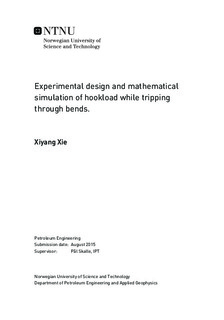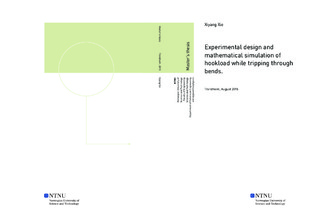| dc.description.abstract | To meet the growing demand of energy consumption, oil companies are trying their best to produce oil. However, in the past few years, the oil price has kept going down and dampened the whole industry. On one side, oil companies need to satisfy the requirement from the market, on the other hand, they have to keep proper focus on their own growth. Drilling operations, especially offshore are costly. Reducing non-productive time (NPT) will save money. The NPT is influenced by downhole restrictions during tripping in and out. Real time drilling data (RTDD) is used to monitor the drilling operations. According to the information obtained through RTDD, downhole restrictions can be detected in advance. Taking proper counter measures as early as possible will avoid restrictions and decrease NPT, thus decrease the cost.
Hookload is an important RTDD parameter. This parameter tells us that how much force in total is applied on the hook. Especially while tripping out through curved sections, hookload is an important parameter for monitoring downhole restriction such as stuck pipe and uncleaned borehole. Predicting normal hookload in curved section with side forces is the topic of this thesis. To reach this goal, both experiment and simulation work will be performed and evaluated.
In the experimental part, a well in the real world, the oil field, was downscaled to lab scale so that a proper physical model could be installed in the workshop. Based on the downscaling calculation, the setup is designed and a 2D setup draft was drawn. This setup could satisfy current experimental requirements. Meanwhile, the design also considered future research. With proper adjustment, the setup can test hookload with circulation, cutting transportation, and 3D tripping out.
In the simulation part, several friction models and torque-drag models were investigated and introduced. The mechanism of side force was also analyzed based on soft string model and stiff string model. A 2D discrete static model was derived. This model could calculate drag force in tripping out considering side force in curved pipe. This static model had a general formula which could be applied in arbitrary well sections. A case study showed it had the same accuracy as classic soft string models. A 2D discrete dynamic model was derived. This model also considered side force in curved section. A case study showed that this dynamic model was valid and could create reasonable simulated hookload. A future step will be to use experimental results for adjusting and verifying this mathematical model. | |

